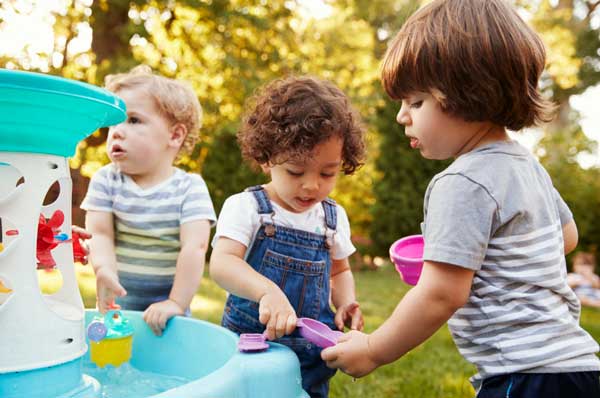Fear of water is more common than you might think – and as a parent, it can be tough to watch your child feel scared or overwhelmed around the pool or bath. The good news? With a little patience, encouragement, and consistency, you can help your child feel more confident and even excited about being in the water.
Here are some simple, expert-backed ways to support your child’s water confidence at home:
1. Make Bath Time a Fun, Stress-Free Experience
The bath is often a child’s first introduction to water and it’s the perfect place to start creating positive associations.
Try this at home:
- Add bath toys, bubbles, or floating animals to make it playful
- Let your child scoop, pour, and splash with cups or sponges
- Avoid surprise splashes or rinsing water over the head — let your child lead

Expert Tip: Keep the focus on fun, not washing. This helps them feel in control and builds trust.
2. Bring Water Play Outside the Bath
If the bath feels overwhelming, start with water play elsewhere like the kitchen, backyard, or balcony.
Try this at home:
- Use a tub or basin to “wash” dolls, toy cars, or pretend dishes
- Set up a water painting station with brushes and a bucket
- Run a sprinkler or let them fill watering cans for plants
Expert Tip: Water doesn’t have to mean full immersion. Start with sensory play and let comfort grow naturally.
3. Introduce Water One Body Part at a Time
If your child is uncomfortable with water on their body, start small.
Try this at home:
- Dip toes or hands in a shallow tray of water
- Gently pat their arms or legs with a wet washcloth while talking calmly
- Invite them to “high-five” the water with their hand
Expert Tip: Gradual exposure helps reduce fear. Celebrate every small win.
4. Gently Practice Getting the Face Wet
Getting their face wet is often a big fear — and that’s okay. You can work on this slowly.
Try this at home:
- Drip water on their shoulders or back using a sponge or small cup
- Wipe their face gently with a wet cloth during play
- Let them splash you first so they see that it’s safe and fun
Expert Tip: Keep it playful. The goal isn’t to “get it over with” — it’s to help them feel okay with it.
5. Model Confidence and Calm
Your child learns by watching you. When they see you relaxed and enjoying the water, they’re more likely to follow your lead.
Try this at home:
- Let them watch you splash, float, or relax in the bath or pool
- Talk aloud about how nice the water feels
- Stay calm and positive, even if they’re hesitant
Expert Tip: Never force. Gentle encouragement works far better than pressure.
6. Stay Consistent & Go at Their Pace
One day they might love the water, and the next they might be unsure again. That’s normal!
Try this at home:
- Make water play a regular part of your week
- Stick to routines that help them feel safe (like having the same towel or toy)
- Keep encouraging progress, no matter how small
Expert Tip: Repetition builds confidence. Every little step forward is a big deal.
*Please note: These tips are suggestions. You know your child best, so do what feels right for you and your little swimmer.
Helping your child overcome a fear of water isn’t about rushing – it’s about creating calm, positive moments that build trust. With time, consistency, and lots of play, your child will feel more confident. And, at Splash’s, our gentle, child-led approach helps even the most cautious swimmers feel safe and proud in the water.
You’re doing an amazing job just by showing up and supporting them.
The Splash’s Team

